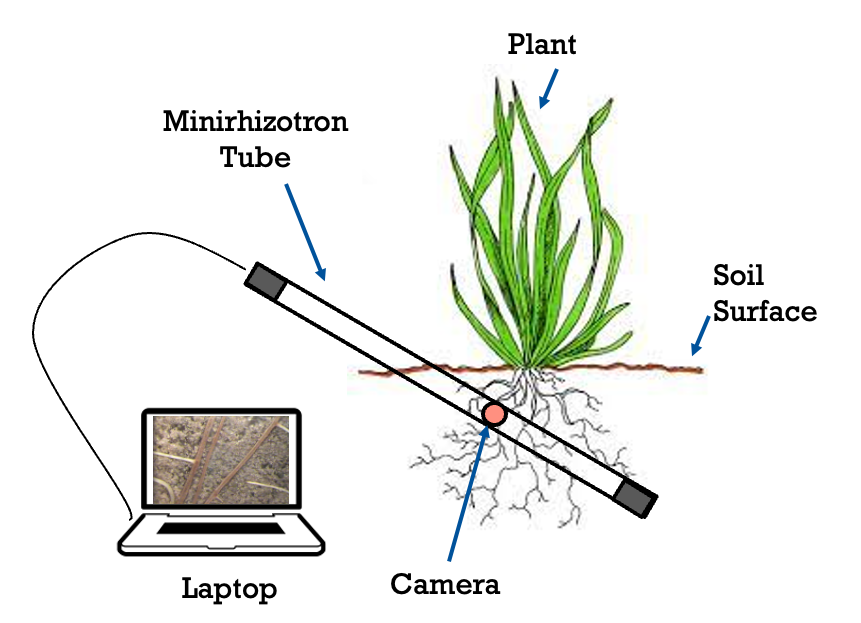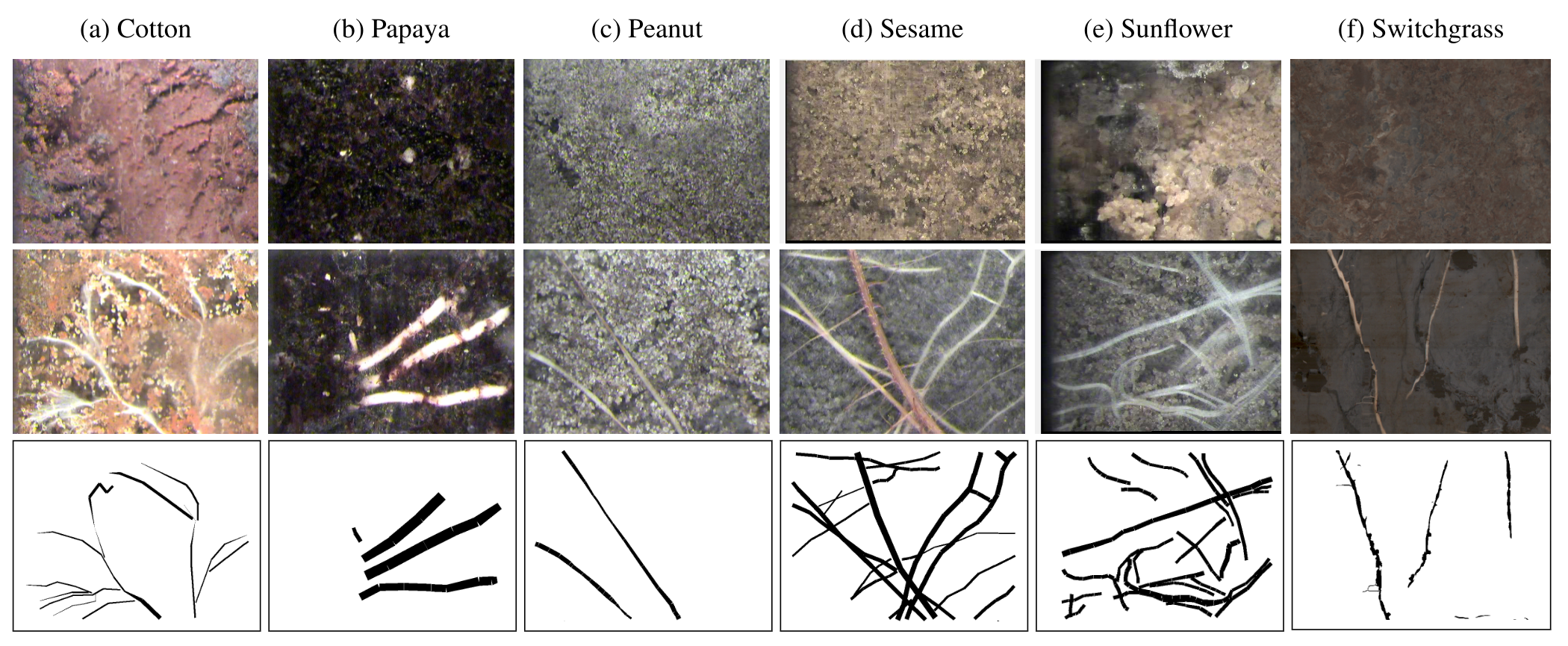PRMI: A Dataset of Minirhizotron Images for Diverse Plant Root Study
Weihuang Xu1 Guohao Yu1 Yiming Cui1 Romain Gloaguen2 Alina Zare1 Jason Bonnette3 Joel Reyes-Cabrera4 Ashish Rajurkar4 Diane Rowland5 Roser Matamala6 Julie D. Jastrow6 Thomas E. Juenger3 Felix B. Fritschi4
1University of Florida 2UniLaSalle Bauvais 3 University of Texas at Austin 4 University of Missouri 5 University of Maine 6 Argonne National Laboratory
AI for Agriculture and Food Systems (AIAFS) in 36th AAAI Conference on Artificial Intelligence 2022
Abstract
Minirhizotron System

Minirhizotron (MR) technology is one of the few most widely-used approaches for phenotyping RSA non-destructively over time. Generally, before planting, MR transparent tubes are installed in the field at an angle (e.g. 45°) to the soil surface in locations that should eventually be directly under or near to plants of interest. Then, as the plant's root systems grow, a high-resolution camera can be inserted along the tube to capture root images at a variety of depths as shown in the Figure. Since the MR tubes remain in the soil during the entire growing period, the camera is able to capture time-series RGB root images providing insight into RSA development. In addition to the development of the whole root structure, MR imagery can be used to observe changes of roots themselves throughout their life cycle such as color, diameter, angle, and length changes.
Dataset Example

Dataset Summary

Manually Annotated Ground Truth Masks

Citation
Plain Text:
W. Xu, G. Yu, Y. Cui, R. Gloaguen, A. Zare, J. Bonnette, J. Reyes-Cabrera, A. Rajurkar, D. Rowland, R. Matamala,
J. Jastrow, T. Juenger, and F. Fritschi. “PRMI: A Dataset of Minirhizotron Images for Diverse Plant Root Study.”
In AI for Agriculture and Food Systems (AIAFS) Workshops at the AAAI conference on artificial intelligence.
February, 2022.
BibTex:
@misc{xu2022prmi,
title={PRMI: A Dataset of Minirhizotron Images for Diverse Plant Root Study},
author={Weihuang Xu and Guohao Yu and Yiming Cui and Romain Gloaguen and Alina Zare and Jason Bonnette
and Joel Reyes-Cabrera and Ashish Rajurkar and Diane Rowland and Roser Matamala and Julie D. Jastrow
and Thomas E. Juenger and Felix B. Fritschi},
year={2022},
eprint={2201.08002},
archivePrefix={arXiv},
primaryClass={cs.CV}
}


